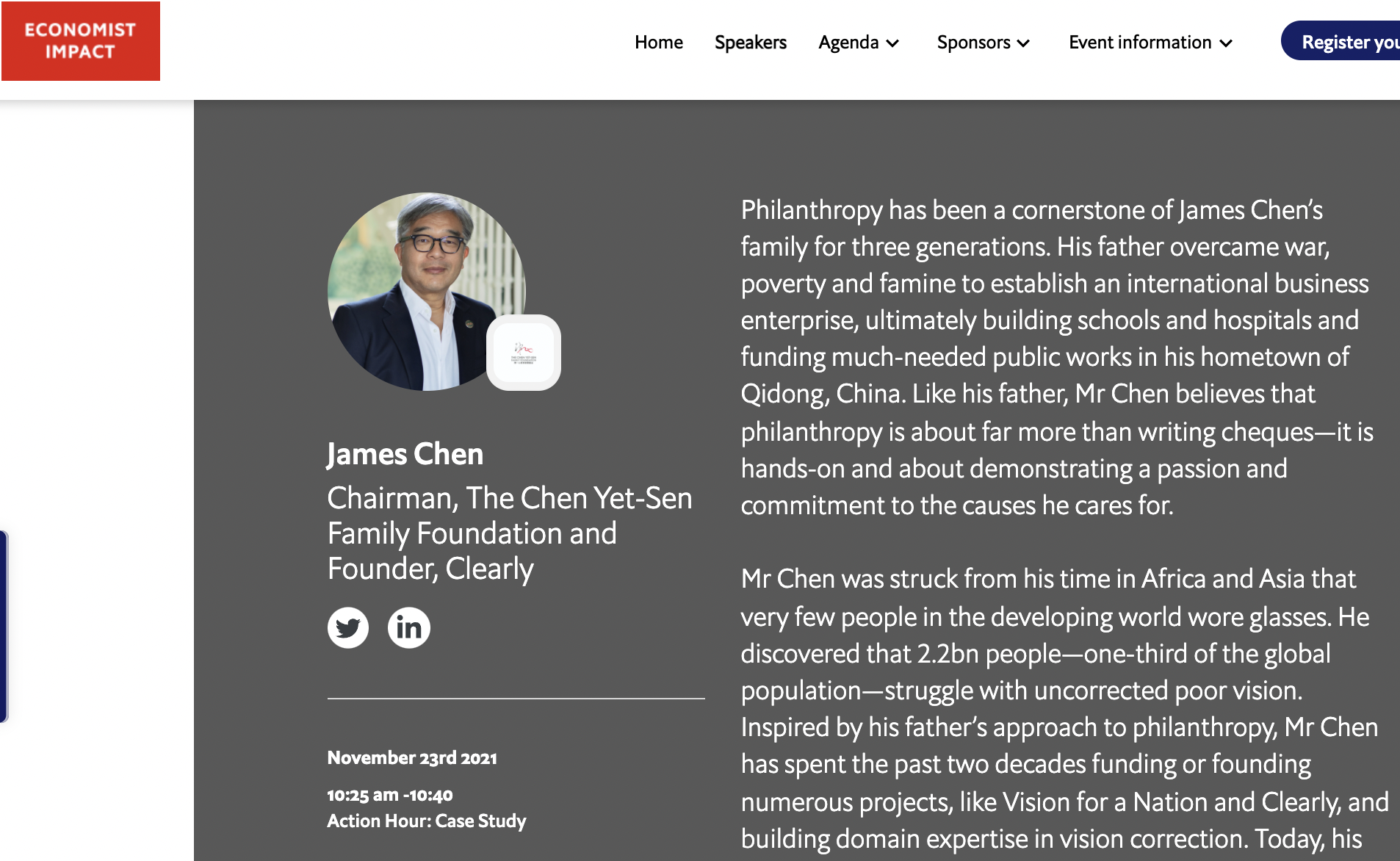The Economist Future of Healthcare Week Asia – A broad and successful exploration of challenges and opportunities in today’s healthcare landscape
10 February 2022
On Tuesday 23rd of November, I had the pleasure of speaking at The Economist’s Future of Healthcare Week Asia. The annual event is only in its second year, and yet over 3,000 healthcare leaders attended, coming together to explore the opportunities and challenges within the healthcare landscape that have been catalysed by the Covid-19 pandemic.
Some fascinating, timely discussions took place across the week, including a panel on the digital transformation of healthcare and another on access to vaccinations. It was a joy to be surrounded by experts in the field, but also to communicate with other key stakeholders in the drive for global change.
My own presentation was a case study in moonshot philanthropy, drawing on takeaways from my two-decade campaign to provide affordable eyecare for all. I chose to detail my journey from rejection at the World Bank, to the individual successes of Vision for Nation and Clearly, leading to our strategy of using the Sustainable Development Goals as a platform to transform the perception of eye-care from a siloed health issue, to one of the key prerequisites for unlocking significant progress in international development.
In speaking to this influential audience and imparting the lessons I have learned along the way, I hoped to inspire other philanthropists to take a high-risk, high-reward approach.
The setbacks I experienced, while disappointing, were key to my campaign’s recent success in the form of the unanimous ‘Vision for All’ UN General Assembly resolution in July 2021, which wrested eyecare from a low-priority health issue into a global sustainable development debate.
Here I want to reflect on the presentation and the broader event, sharing the key takeaways and insights.
Primarily, I emphasised that philanthropists have a duty to take risks. Since philanthropists are owners rather than agents of capital, they are able to privatise the consequences of failure, and socialise the benefits of success. Moonshot philanthropists, therefore, have a duty to seek out lofty, paradigm-shifting goals, risking failure while tackling the most pressing issues of our time.
Second, time, I’ve learned, is as valuable as investment. Successful philanthropy requires a steadfast resolve: you will face setbacks, but they must not discourage you. Failure and rejection are not barriers to success, but obstacles to learn from and persevere through. Time spent failing, learning, and re-assessing leads to ‘domain expertise’: this gained, expert knowledge and understanding are necessary to ensure that philanthropic action is targeted and impactful.
Finally, moonshot philanthropists should build a coalition of the willing to maximise their impact. The value of collaboration should not be underestimated. When experts and stakeholders share a common goal and work together, they form a real catalyst for change. If not for the persistence of my team, fantastic partners and stakeholders, and some lucky breaks, I could have spent a lot more money and time with fewer results to show for it.
While the presentation shone light into moonshot philanthropy, my own journey is not complete. A billion people around the world still lack access to a simple pair of glasses. But my team has achieved a huge milestone towards that goal, having spent over five years spreading our message far and wide.
Our small campaign is now a global movement that has aligned the entire world around a single target of ‘eyecare for all by 2030’. Countries are committed to ensuring full access to eyecare services for their populations, while embedding this new eyecare infrastructure as a step in their journey to achieving the Sustainable Development Goals. Reflecting on the past two decades, I can’t help but be hopeful for the decade ahead.
Thank you to The Economist’s brilliant events team for allowing me to share my journey.
See the event overview here.

